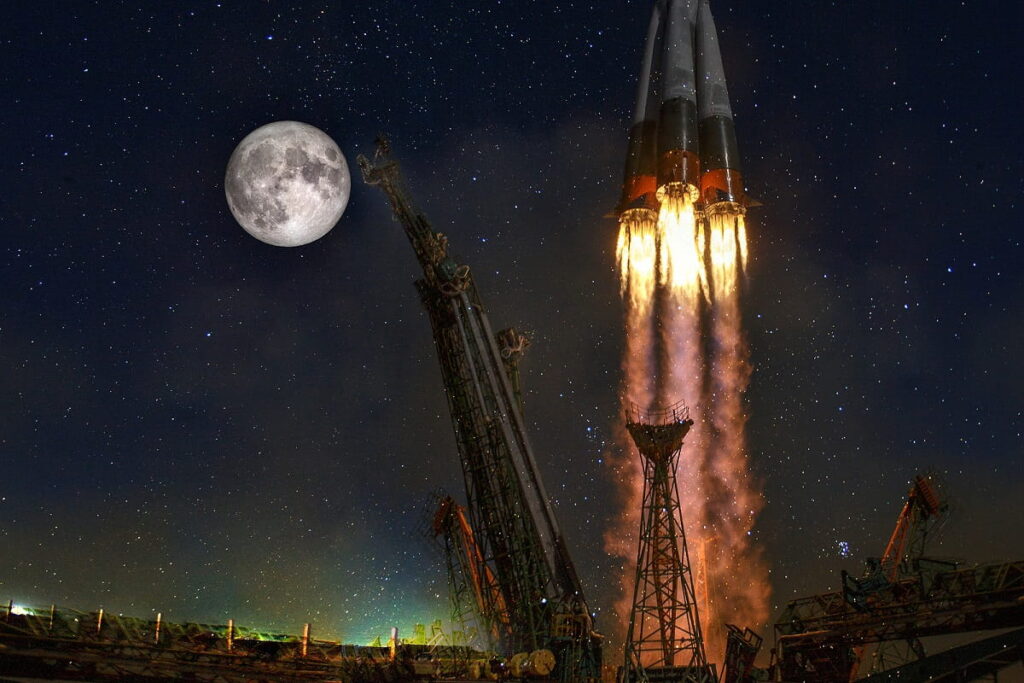8 Reusable Rocket Companies for Cheaper Space Travel
Table of contents

Earlier this month, we broke down the upcoming public offering from Rocket Lab, which is really the only private space company other than SpaceX that is consistently conducting commercial launches. They also share one other key element – both companies believe reusable rockets represent the future of the commercial launch industry. And they’re not alone. A growing number of startups are betting they can develop launch systems that repeatedly reuse various rocket components.
It’s sort of the thrift store version of space travel, right? Why buy that pair of $50 jeans when you can get a lightly used version for $5 after someone has pandemic-binged their way into the next size? The same (sort of) goes for rockets. For example, a SpaceX launch aboard a Falcon 9 rocket nominally costs $62 million. The cost reportedly drops by less than half if the company reuses roughly 70% of its rocket. Simply put, reusable rockets are cheaper.
SpaceX didn’t invent reusable rockets. NASA’s iconic space shuttle pioneered the use of reusable rocket boosters, though it wasn’t quite as cheap to operate. One analysis pegged the price at $1.5 billion per launch over the lifetime of the program, which is a pretty strong argument in favor of good old-fashioned capitalism. And now we’re seeing the full expression of the free market system in the 21st-century version of the space race. Scores of companies are rushing in to fill every conceivable niche of this new and exciting ecosystem, from rocket launch services for small satellites to satellite servicing and space tourism.
Most of them will fail, but it’s worth taking stock of some of the key players in each sector. Here we give you eight companies actively using or developing reusable rockets.
The Eight Hundred Pound Gorilla
Currently the world’s third-most valuable startup at $74 billion, SpaceX has raised $6.3 billion in disclosed funding since the company was founded nearly 20 years ago. The ability to land a rocket back on Earth – not to mention on a drone ship at sea called Of Course I Still Love You – is no easy feat. His Most Muskiness, Elon Musk, gave his company only about a 50% chance of success back in the day. Yet SpaceX has successfully sent up about 55 missions aboard reusable rockets since it introduced the technology in 2018. Repeatability means the company doesn’t have to build a huge fleet of its Falcon 9 rockets to maintain an aggressive launch schedule. So far, in 2021, SpaceX has launched a mission every nine days on average, according to Ars Technica.

Earlier this month, SpaceX launched yet more satellites for its global internet network, Starlink, using a Falcon 9 first stage for the ninth time – yet another record. And SpaceX is also doing its best to keep the oceans debris-free: It now retrieves the $6 million nose cone, which sits atop the rocket and protects the payload, using a giant net between a couple of ships.
Smaller is Better But …
Founded about 15 years ago in New Zealand, Rocket Lab has raised $215 million and is expected to be worth about $4.1 billion when it goes public later this year. Now based in the Los Angeles area, the space startup is the only other company not called SpaceX to have successfully recovered a reusable rocket. Well, once, but you have to start somewhere. Unlike SpaceX, which uses propulsion to land the Falcon 9, Rocket Lab’s Electron reusable rocket deploys a parachute to slow its descent before a helicopter captures the vehicle in midair. The two companies aren’t exactly rivals, as Rocket Lab is currently dedicated to the small satellite business.

However, that could change with Neutron, a larger reusable rocket that the company plans to launch as soon as 2024. It will be capable of hauling about 17,600 pounds into space versus the Electron rocket, which can boost about 660 pounds into low Earth orbit (LEO). The bigger rocket will reportedly also employ an ocean-based platform for landing, as well as be capable of carrying astronauts to the International Space Station.
3D Printed Reusable Rockets
At one point in time, Rocket Lab was known as the 3D-printing rocket company until Relativity Space came along. Founded in 2016, the startup is also based in the Los Angeles area and has amassed about $685 million in funding at a valuation of $2.3 billion. While allegedly boasting the world’s largest 3D metal printer, Relativity Space has yet to prove its 3D-printed automation technology for the Terran 1 will produce a space-worthy rocket for the small satellite market. That answer is supposed to come later this year with the first launch of a rocket with more than 90% of its components 3D printed. Contrast that with Rocket Lab, which primarily 3D prints the Rutherford engines used to power its Electron rocket, along with a few other bits and bobs.

The Terran 1 is designed to lift about 4X the amount of weight as its rival, with a proposed cost of about $12 million versus $7 million for a trip aboard the Electron to LEO. Lack of an actual working rocket hasn’t stopped Relativity Space from also throwing down the gauntlet at SpaceX with plans to now build a reusable rocket on par with the Falcon 9 in power and capability called Terran R.
Update 06/08/2021: Relativity Space has raised $650 million in Series E funding to accelerate the production of Terran R, the company’s heavy-lift, fully reusable two-stage rocket. This brings the company’s total funding to $1.3 billion to date.
Reusable Rockets for Space Tourism
That technically rounds out the leaderboard unless you count Blue Origin, which at this point remains competitive largely because of Ming the Merciless Jeff Bezos. The world’s No. 1 or No. 2, maybe sometimes No. 3, richest man is stepping away from the day-to-day operations of Amazon (AMZN) to focus on what has apparently just been a side hustle to date with his space startup. Bezos has reportedly sunk billions into the 21-year-old company since 2016 from his equity in Amazon. The results so far: The company’s reusable New Shepard rocket has reportedly launched 14 times successfully, with one booster having been flown seven times consecutively.

The plan is to finally begin offering space tourists an 11-minute thrill ride sometime this year. No, really.
Europe Falls Behind?
Word on the street is that the Europeans are freaking out about the dominance of SpaceX. That’s because government-led efforts to develop EU rocket technology can’t compete on cost against the reusable Falcon 9. Can the private market do better? Founded in 2015, Orbex is a U.K.-based launch provider developing its own reusable rocket for the small satellite market. The company has raised nearly $64 million, including $24 million just last December. Orbex does a little bit of everything that’s trending in NewSpace today. It recently commissioned construction of the largest industrial 3D printer in Europe to print more than 35 large-scale rocket engines and main stage turbo pump systems annually. The 3D printing platform includes a machine vision system for automatic imaging-based inspection of printed components.

Dubbed Prime, the rocket will be fueled by bio-propane, a clean-burning, renewable fuel that reduces CO2 emissions by 90% compared to kerosene-based fuels. And, of course, it will be reusable, with no debris in the ocean or in orbit around the Earth. There is also no information about how the company proposes to pull off that trick yet.
China Surges Forward
Meanwhile, China’s national space program has shown it can compete with NASA on the big stage, with major missions to both the moon and Mars within the last year or so. The country’s space startup scene is a little less obvious, though reusable rockets are certainly part of the equation. Last year, more than $900 million was invested in private Chinese space companies, SpaceNews reported.
A good chunk of that money went to i-Space (also known as StarCraft Glory Space Technology Co.), which raised $172 million in 2020, bringing total funding to $276.5 million. Founded in 2016, the Beijing-based company has also announced plans to go public on the Science and Technology Innovation Board, a market focused on emerging tech companies in China. The space startup was the first private venture in China to successfully launch its Hyperbola-1 rocket in 2019, delivering two satellites to space. Its latest effort ended in failure earlier this year. However, i-Space is already working on a reusable version of its launch vehicle, Hyperbola-2. Other Chinese space startups developing reusable rocket technology include Land Space, Galactic Energy, and Deep Blue Aerospace, per SpaceNews.
More Space Startups and Reusable Rockets
And we’re still not done. Some of the newest space startups are also pegging their future on reusable rocket technology.
Founded in 2019 by a couple of dudes that worked at Blue Origin (waiting for the lawsuits over proprietary technology to begin), Seattle-based Stoke Space Technologies raised $9.1 million in a Seed round last month, bringing total funding to about $9.4 million. The young company is working on solving a different part of the reusability equation – the upper second stage that normally burns up in the atmosphere. That’s too bad, because when things don’t go quite as planned, it sure makes for a pretty light show:

Update 12/15/2021: STOKE Space has raised $65 million in Series A funding to fully develop a second-stage prototype and fly it by the end of next year. This brings the company’s total funding to $75.2 million to date.
Founded in 2014, EXOS Aerospace has raised a total of $7.6 million in disclosed funding, including $1.7 million in January. Their reusable rocket – SARGE-1 – flew four test missions over the past several years, something that puts them in an elite category for space companies. Four successful launches of the same SARGE 1 rocket places them among only three other companies who have achieved this—McDonnell Douglas, SpaceX, and Blue Origin. Exos Aerospace has accomplished this with a team of fewer than 20 people, and a little over $5M invested in the SARGE program. SARGE 1 was the developmental testbed for Exos’ Jaguar Low-Earth-Orbit (LEO) rocket that is currently under development, and SARGE-2 which is now receiving payload orders for Q1-2022.
Conclusion
You might think SpaceX has already won the reusable rocket race, but NASA has shown a willingness to spread the wealth among lesser-known and relatively unproven companies. For instance, Axiom Space is one of the latest recipients of the space agency’s financial confidence, with a contract to build a new module for the International Space Station. It stands to reason that the space agency will continue to spread the wealth to help foster innovation in reusable rocket technology.
For retail investors eager to wager on the reusable rocket theme or commercial space ventures in general, the pickings remain slim. While companies like Rocket Lab and Astra Space are entering the public market through risky reverse mergers with blank-check companies, it’s best to remain on the sidelines for now. As noted in a previous article, investors can get some small (1.5%) indirect exposure to SpaceX through the Baillie Gifford US Growth Trust, which is made up of mostly both public and private tech companies. A U.K. asset management firm, Baillie Gifford is also an investor in Relativity Space following last year’s $500 million Series D, though the company is not included in the US Growth Trust fund as of yet.
Space is a risky space. Our exposure to NewSpace involves a single space stock. Want to know which one? Become a Nanalyze Premium annual subscriber and find out today.

Sign up to our newsletter to get more of our great research delivered straight to your inbox!
Nanalyze Weekly includes useful insights written by our team of underpaid MBAs, research on new disruptive technology stocks flying under the radar, and summaries of our recent research. Always 100% free.























I found a very promising German stock: Mynaric. I think it is going to be a multibagger in the next couple of years.
Mynaric is a manufacturer of laser communication equipment for airborne and spaceborne communication networks, so called constellations.
Interesting company that uses lasers for communication. Below our market cap cutoff, but we’ll add to our to-do list for further research. Thank you for raising!